Plastic cutting boards: features and choices

A kitchen cutting board is an item that a good housewife always has at hand. It is designed for cutting various products, cutting meat, fish. Sometimes, cutting boards are used to serve cooked food. Previously, wood products predominated in the arsenal of housewives, but today the choice of materials is much wider. On sale you can find wooden, glass and plastic models.
Let's dwell on the latter option and figure out what the pros and cons are inherent in plastic kitchen boards, as well as how to take care of them in order to maintain aesthetics and extend their service life.

Peculiarities
High-quality plastic kitchen boards are made from polypropylene or polyethylene. These two types of plastics are harmless to human health. When in contact with food, they do not endow them with harmful toxic substances.
Some manufacturers offer models with a special antibacterial coating. Such a "shell" increases the hygiene of the product and extends its service life.
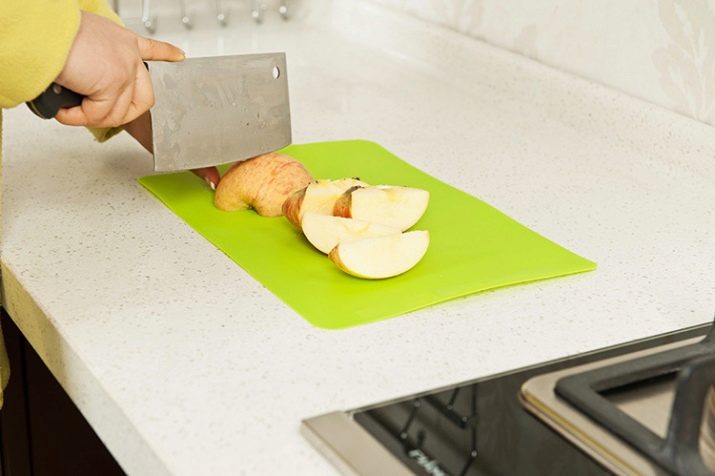
Advantages and disadvantages
Any models of plastic boards have certain advantages:
- resistance to absorption of strong odors;
- obstacle to the development of harmful microorganisms;
- light weight;
- aesthetics - various models are on sale in different color variations;
- ease of care - the product is allowed to be washed with any detergent, it is possible to wash it in a dishwasher;
- durability and reliability (applies to items made of high-quality plastic);
- affordable price.
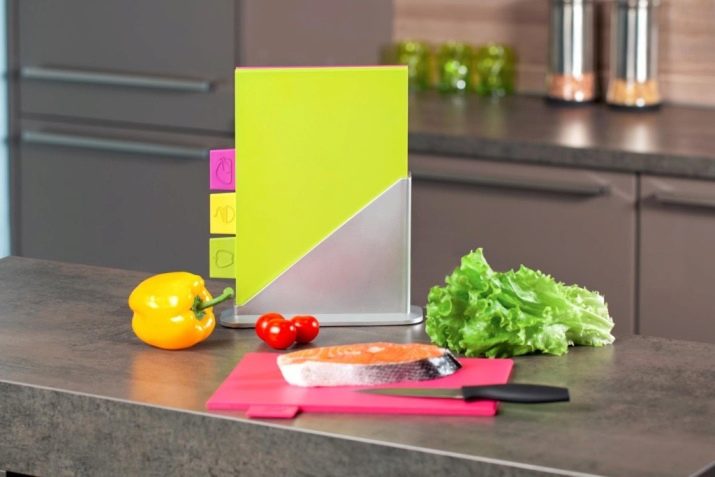
Cutting plastic boards also have some disadvantages.For example, if a product is made of low quality plastic, its surface can become scratched when interacting with a knife. Due to such damage, the object eventually loses its hygienic properties - it begins to "absorb" extraneous odors, and microorganisms, dangerous to health, multiply on its surface. Cheap plastic products cannot be called practical or durable.
Another disadvantage is the "fear" of high temperatures.... This applies to both cheap and expensive models. Do not put hot dishes on a plastic object, otherwise it will lose its attractive appearance.

Models
The stores have a wide range of plastic cutting boards. Various models differ in their shape, dimensions, colors, design features. On sale there are products of the following forms:
- square;
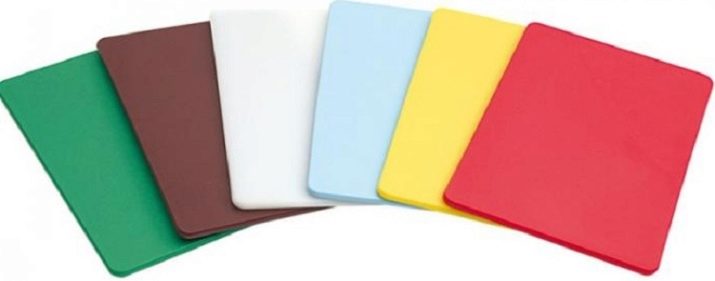
- rectangular;
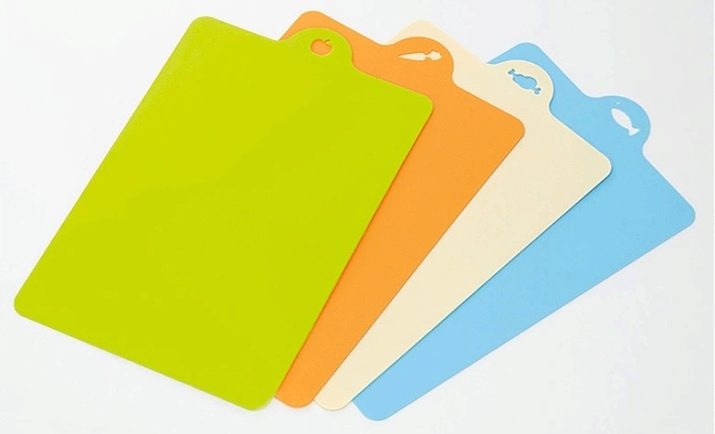
- round;
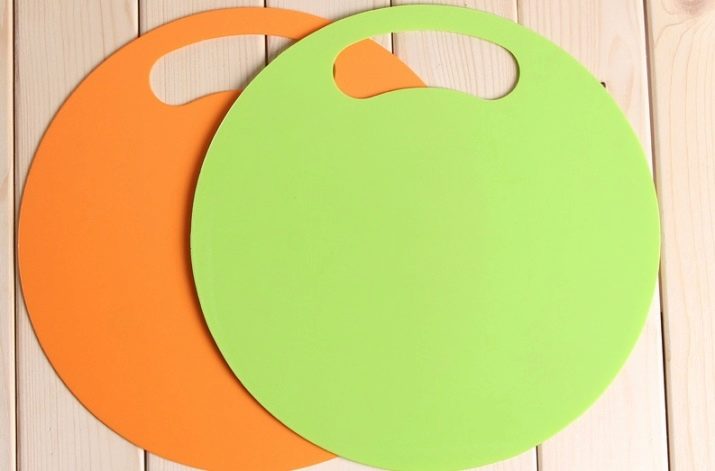
- oval.
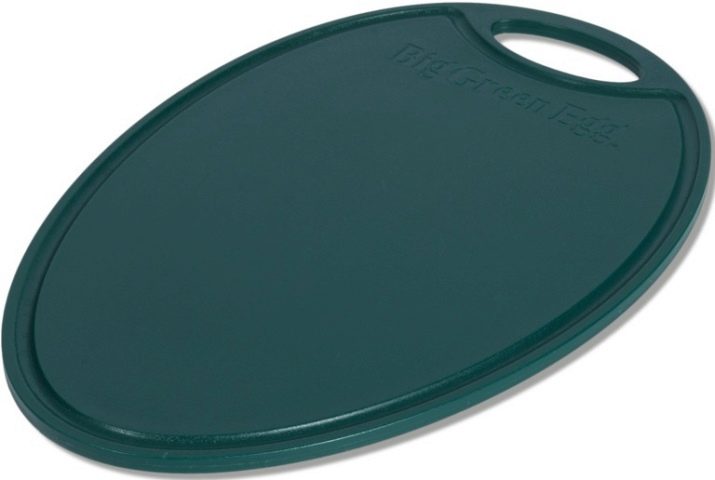
As a rule, color models have bright and rich shades. They can be either monochromatic or with different images: fruits, berries, landscapes, flowers, pictures with various kitchen paraphernalia. You can pick up small-sized products or large boards made of thick plastic. The latter are able to withstand serious mechanical stress, but it is still impossible to chop or chop meat on them.
Manufacturers produce cutting boards with or without handles. Models with a holder are more convenient to use. Planks on a stand are also available for sale. Basically, such kits are made in a single stylistic performance.
The set can include 2, 3, 4 or more items.
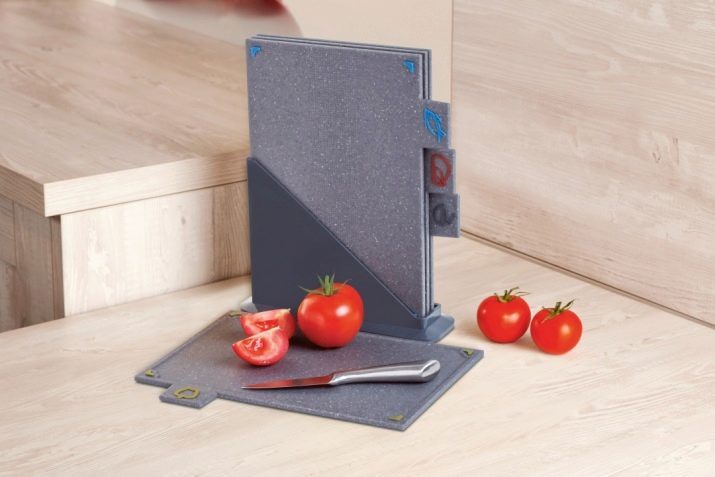
Depending on the model, plastic boards can:
- be equipped with specialized rubber buttons to prevent slipping when cutting products;
- be equipped with a container designed for dumping chopped vegetables, fruits, meat and other products;
- have "grooves" for collecting excess fluid;
- have an antibacterial protective "shell";
- equipped with thermal protection (these are the only models that can be used as a hot pad).

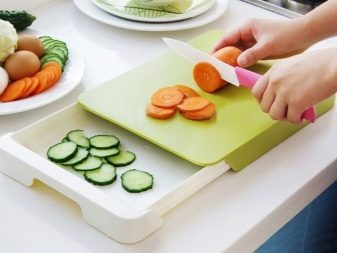
Due to the huge selection of domestic and foreign plastic cutting boards, it is sometimes difficult to make the right choice and purchase a high-quality and easy-to-use model. Here are the main parameters that you should pay attention to when selecting.
Criterias of choice
A kitchen cutting board is not the most important "tool" in the arsenal of a modern housewife. However, without it, it will be problematic to cook food without damaging the tabletop on the working area of the headset. When choosing an item, it is important to hold the item in your hand. It should not be too heavy and cumbersome, otherwise it will be inconvenient to use such an object.
The most "popular" board sizes:
- 20 * 30 cm;
- 30 * 40 cm;
- 30 * 50cm.
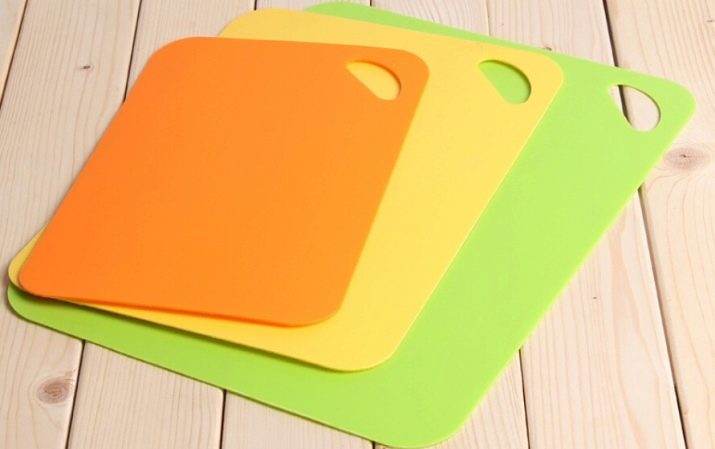
It is not always comfortable to use large objects, as well as small ones, therefore it is worth choosing the optimal size for yourself.
The shape of the board is selected depending on personal preference, but experienced chefs believe that the most convenient items are rectangular. The colors and appearance of the product are also selected according to their desires. In order not to get confused about which board is intended for which product, you can buy products in the form of vegetables, fruits or fish for cutting the corresponding products.
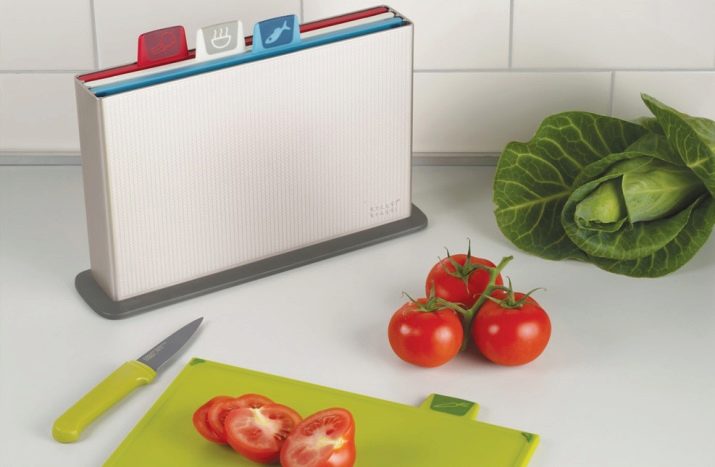
If convenience is important, preference should be given to models with handles, recesses or special recesses designed to grip the product. More convenient are the models equipped with a hanging hole and “grooves” for collecting liquid that has emerged when cutting products.
Choosing a cutting board you should refuse to purchase cheap and thin items... As a rule, in order to reduce the cost of such a product, manufacturers use low-quality raw materials for its manufacture.The result is an unreliable board that will soon need to be replaced.
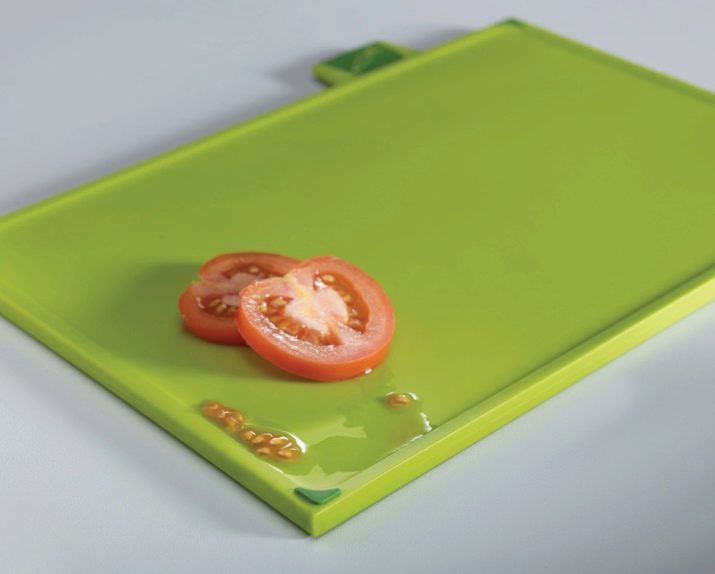
Subtleties of care
Any kitchen board needs to be cared for properly. Such measures will extend its service life, and will also help prevent the growth of harmful microorganisms on the surface of the object. Plastic boards can be washed in the dishwasher or by hand using a sponge and laundry soap or specialized detergent. After washing, it is advisable to wipe the product dry.
You can use a store-bought cleaner or baking soda to clean your board. Vinegar (essence 9%), lemon slice or sodium bicarbonate will help to quickly remove the smell. They are sold in almost any grocery store and, despite their low price, are very effective. To clean the product or eliminate unpleasant odors, you need to soak the board in water with vinegar in a 1: 1 ratio, rub with lemon or a prepared paste of soda and water.
With proper care, the kitchen board will retain not only its external perfection, but also its hygiene for a long time.

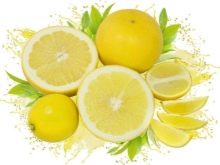
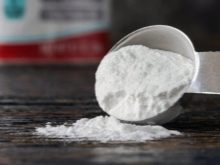
For the advantages of plastic boards, see the next video.








